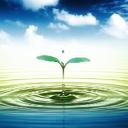Yahoo Answers is shutting down on May 4th, 2021 (Eastern Time) and beginning April 20th, 2021 (Eastern Time) the Yahoo Answers website will be in read-only mode. There will be no changes to other Yahoo properties or services, or your Yahoo account. You can find more information about the Yahoo Answers shutdown and how to download your data on this help page.
Trending News
Different water pollutants?
List three categories of water pollutants. Provide an example and a source of each, then identify and describe one test for determining the presence and concentration of the water pollutants you identified.
2 Answers
- connieLv 79 years agoFavorite Answer
1. Bacteria, viruses, protozoa and parasitic worms.
Sources: Human & animal wastes.
Harmful effects: disease
Measure the # of colonies of fecal coliform bacteria (such as various forms of E.coli) present in a water sample. Various strains of these bacteria live in the colon or intestines of humans and other animals and thus are present in their fecal wastes. Although most strains of coliform bacteria do not cause disease, their presence indicates that water has been exposed to human or animal wastes that are likely to contain disease-causing agents.
2. Oxygen Demanding Wastes
Organic waste such as animal manure and plant debris that can be decomposed by aerobic bacteria.
Sources: Sewage, animal feedlots, paper mills, an food processing facilities.
Harmful effects:
Large populations of bacteria decomposing these wastes can degrade water quality by depleting water of dissolved oxygen. This causes fish and other forms of oxygen-consuming aquatic life to die.
The amount of oxygen demanding wastes, b/c they are broken down by oxygen-requiring bacteria, and plant nutrients in a sample of water. (Scientists also measure the Biological Oxygen Demand (BOD), the amount of dissolved oxygen consumed by aquatic decomposers.
3. Organic Chemicals
Oil, gasoline, plastics, pesticides, cleaning solvents, detergents
Sources: Industrial effluents, household cleansers, surface runoff from farms & yards.
Harmful effects:
Can 1) threaten human health by causing nervous system damage (some pesticides), reproductive disorders (some solvents) and some cancers (gas, oil, solvents). 2) harm fish and wildlife.
How do scientists measure /monitor water pollution by using living organisms? They use something like an indicator spec ies. So they remove aquatic plants such as cattails and analyze them to determine pollution in areas contaminated w/fuels, solvents and other organic chemicals) Bottom dwelling species such as mussels that feed by filtering water through their bodies can also be analyzed to determine water quality.
4. Sediment
Soil, silt
Sources: Land erosion
Harmful effects:
Can 1) cloud water and reduce photosynthesis 2) disrupt aquatic food webs, 3) carry pesticides, bacteria & other harmful substances, 4) settle out and destroy feeding and spawning grounds of fish, and 5) clog and fill lakes, artificial reservoirs, stream channels & harbors.
How do scientists measure sediment content of water? They measure this by evaporating the water in a sample and weighing the resulting sediment. (suspended sediment clouds water)
- ?Lv 44 years ago
warmth, as in waste warmth from a skill plant, isn't a pollutant . A pollutant is defined as "waste understand that contaminates the water or air or soil," the comparable is genuine for noise as a "pollutant." There could be noise pollutants, yet noise, itself, isn't a pollutant. "pollutants," in spite of the incontrovertible fact that, is defined as "the presence in or creation into our environment of a substance or component that has risky or poisonous outcomes." So interior the language of the corporate of environmental risk-free practices, there could be one among those component as warmth pollutants , yet warmth isn't a pollutant. warmth is a stressor, to ascertain. yet not a pollutant. have been given it? If it sounds as though like splitting hairs or basically a semantic argument... it is not. "pollutants" is an obscure term which would be utilized to describe something you desire... pollutants of a fashion of existence, pollutants of an paintings form, pollutants of a race, pollutants of a stream. "Pollutant" is, maximum emphatically, waste remember; i.e., a substance.






